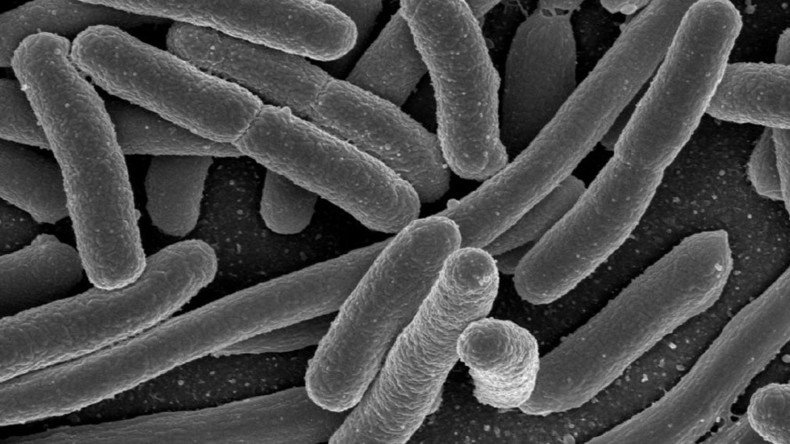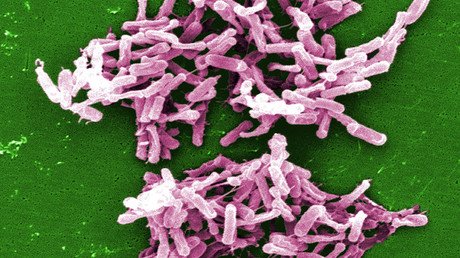Tiny gold disks & light could replace antibiotics in fight against bacteria – study

Using antibiotics to kill bacteria could soon be a thing of the past. Researchers have developed a way to kill bacteria in seconds by using gold nanodisks and light, according to a new study. The discovery could reduce the risk of antibiotics resistance.
"We showed that all of the bacteria were killed pretty quickly...within five to 25 seconds. That's a very fast process," author Wei-Chuan Shih, a professor in the University of Houston's department of electrical and computer engineering, said in a statement.
The scientists, whose work was published in the journal Optical Materials Express on Thursday, managed to create gold nanoparticles by dissolving actual gold into smaller and smaller disconnected pieces. From there, they crafted the nanoparticles into disks.
The researchers based their work on the findings of previous studies, which proved that gold nanoparticles absorb light strongly by converting photons into heat and reaching temperatures hot enough to destroy various types of cells – including cancer and bacterial cells.
In order to test the antimicrobial properties of their new nanoparticles when activated by light, they grew bacteria in a lab, including E. coli and two types of heat-resistant bacteria that thrive in even the hottest environments.
They placed the bacteria cells on the surface of a single-layer coating of the tiny disks and shone near infrared light from a laser on them. Afterwards, they used cell viability tests and SEM imaging to determine which percentage of cells survived the procedure.
Using a thermal imaging camera, the scientists found that the surface temperature of the particles reached up to 180°C (356°F) nearly immediately, resulting in “thermal shocks.” As a result, all of the bacterial cells were killed within 25 seconds.
E. coli proved to be the weakest of the bacteria, with its cells dying after just five seconds of laser exposure. The other two types of bacteria required the entire 25 seconds.
However, this is still much quicker than traditional sterilization methods such as boiling water or using dry-heat ovens, Shih noted. It is also “considerably shorter” than what other nanoparticle arrays have demonstrated in recent studies. In those bodies of research, the time to achieve similar levels of cell death ranged from one to 20 minutes.
The success in the most recent study is reliant on the combination of the gold disks and the laser, as neither managed to kill nearly as many cells when used alone.
According to Shih, the findings could potentially have important biomedical applications. The researchers are currently investigating using the particles as a simple coating for catheters, in order to help reduce the number of urinary tract infections in hospitals.
"Any sort of light activated procedure would be much easier to implement at the bedside of a patient," instead of removing and potentially replacing the catheter every time it needs to be cleaned, he said.
The scientists are also looking into integrating the nanoparticles with filter membranes in water filters, in order to help improve water quality.













